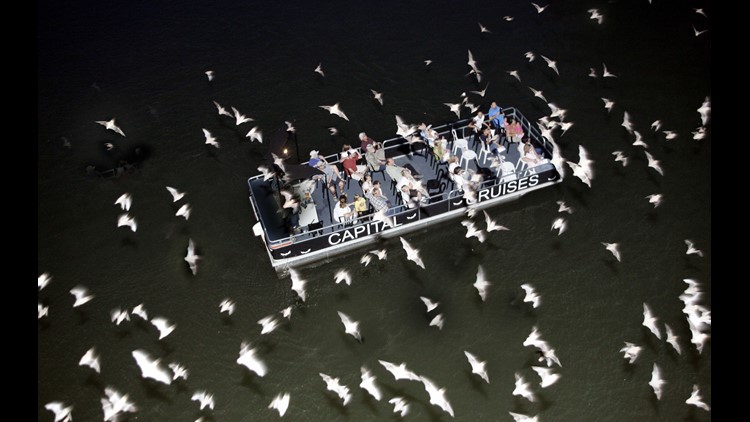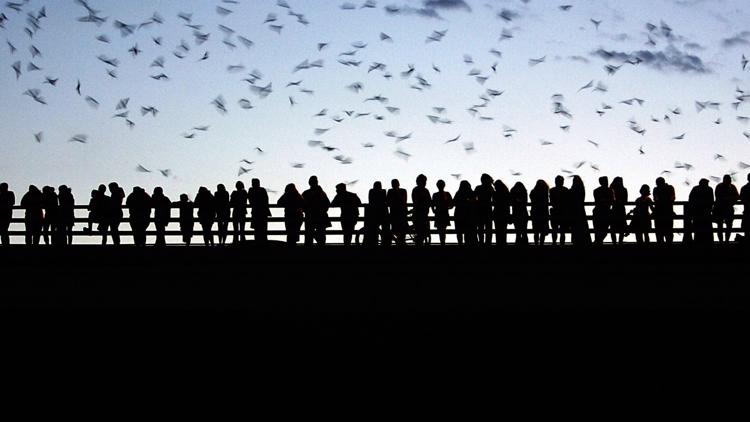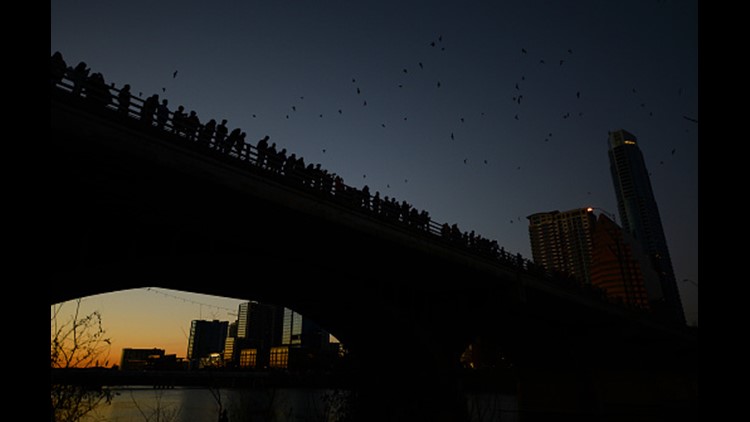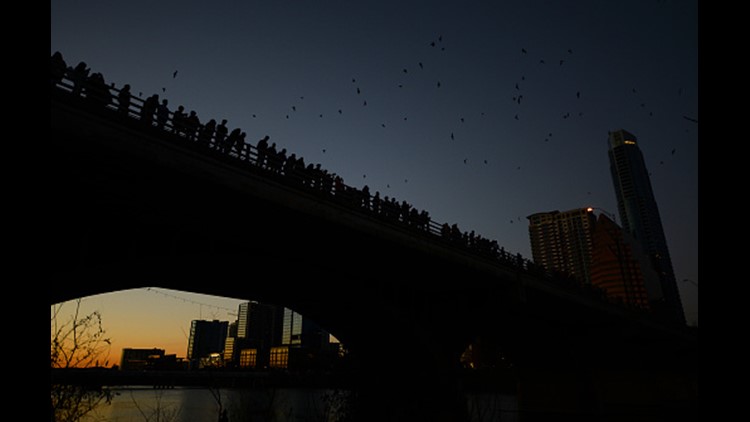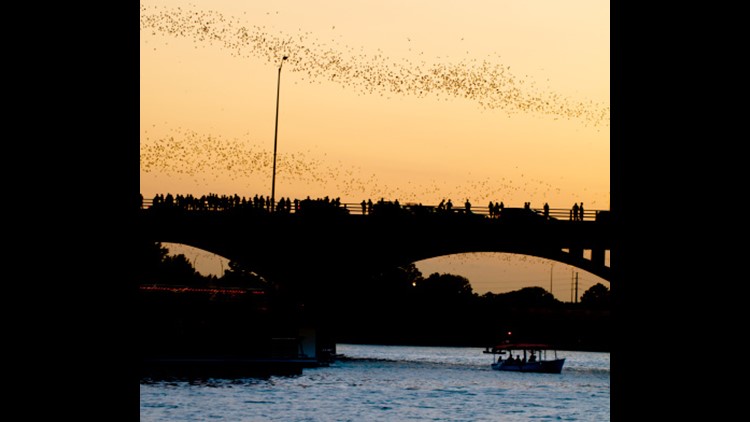If you live in the Austin area, you're no stranger to Mexican free-tailed bats and their majestic flight from underneath the Congress Avenue bridge.
So on April 17, National Bat Appreciation Day, we wanted to take a moment to recognize our black-winged neighbors.
1. The Mexican free-tailed bats spend their winters in Mexico before migrating to Texas in February, according to the Texas Parks and Wildlife Department.
2. Mexican free-tailed bats fly fast and soar high. Bat Conservation International says they can fly at 60 mph at altitudes over 10,000 feet: the highest of any other bat.
3.Some big businesses in the past used to use Mexican free-tailed bat droppings as a natural fertilizer because the species produces so much. In the 1900s, it was reported that some caves could produce 75 to 80 tons of bat droppings, according to Bat Conservation International.
Mexican free-tailed bats at Congress Avenue bridge
4.Caves in Central Texas serve as nursing sites for Mexican free-tailed bats, and many give birth in colonies, which can number in the millions.
5. According to TPWD, newborn bats are called pups, and they weigh nearly a quarter of their mother's weight.
6. In 1995, The Texas State Legislature named the Mexican free-tailed bat the state flying mammal, TPWD said.
7. The Congress Avenue Bridge hosts up to 1.5 million bats during the summer months and can be seen by a crowd of over 100,000 people at the Statesman Bat Observation Center, according to Bat Conservation International.
Were these facts too easy for you, CLICK HERE and test your bat knowledge with this Austin American-Statesman quiz.
CLICK HERE for information on bat watching tours.



